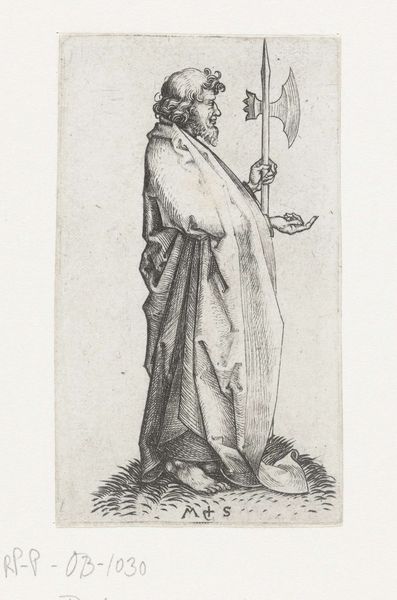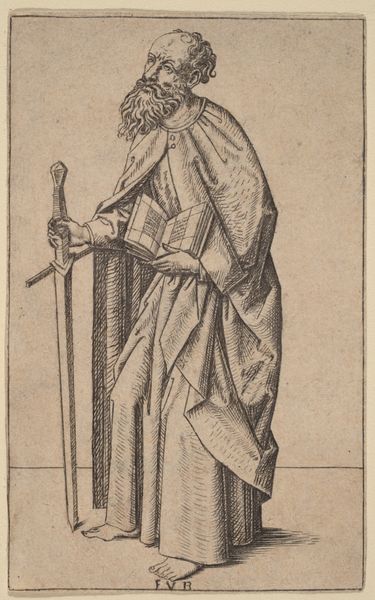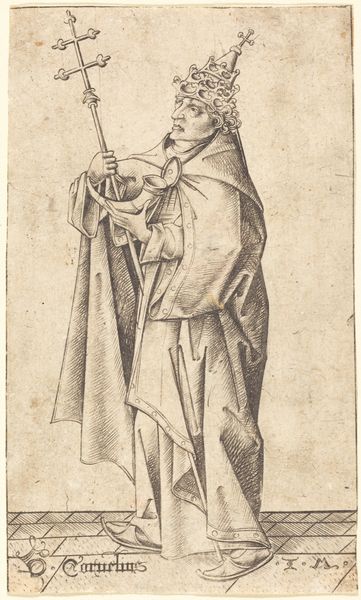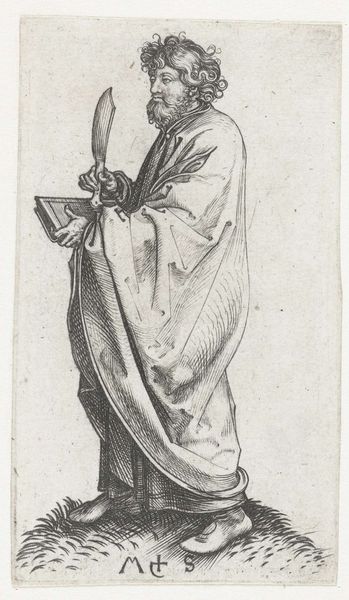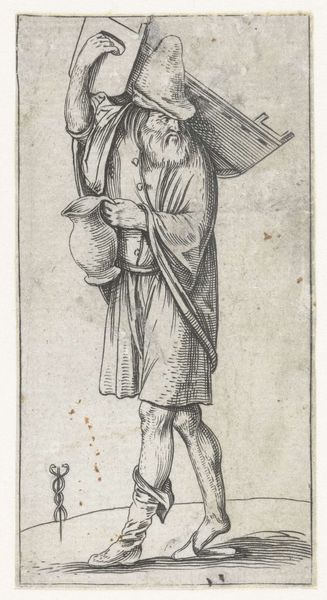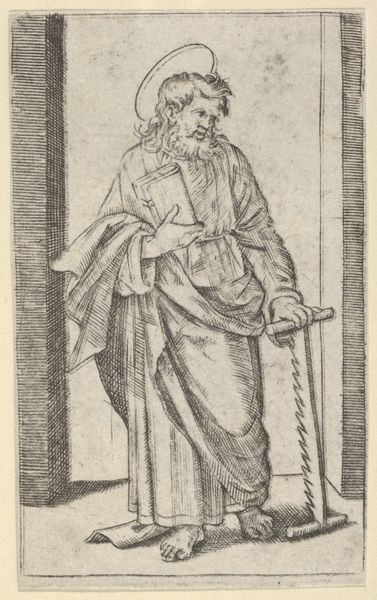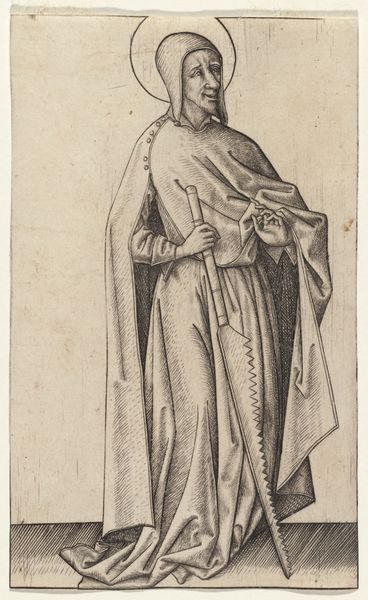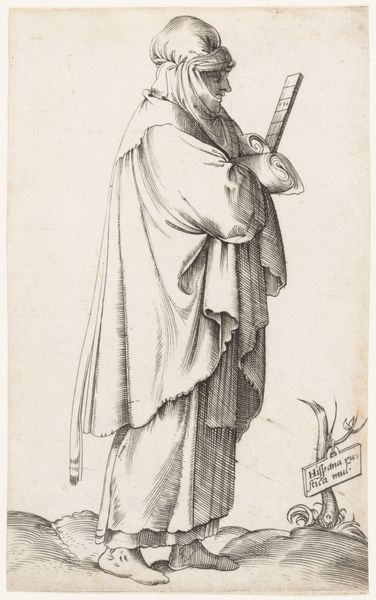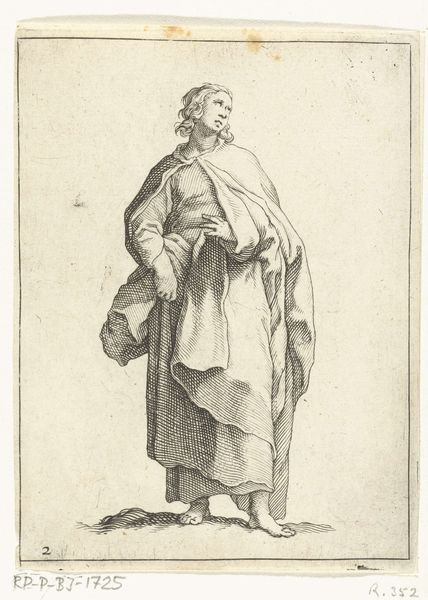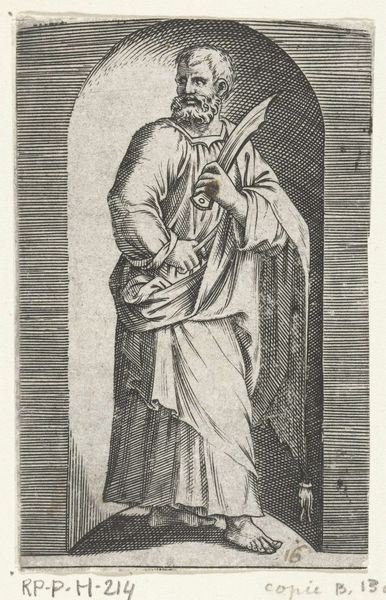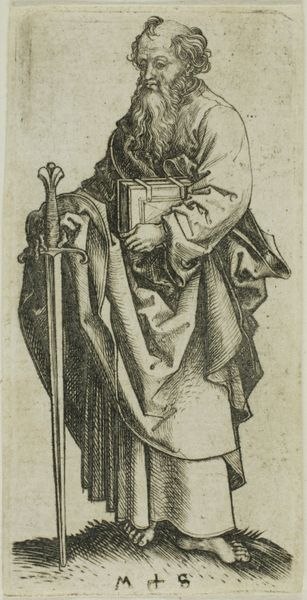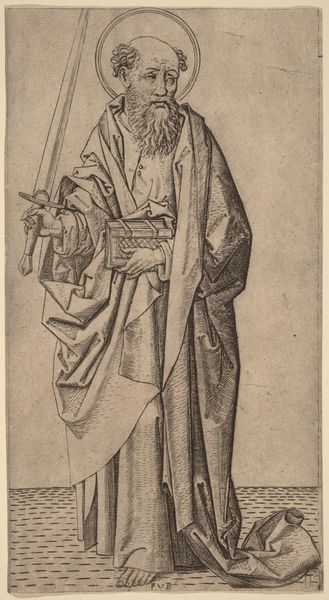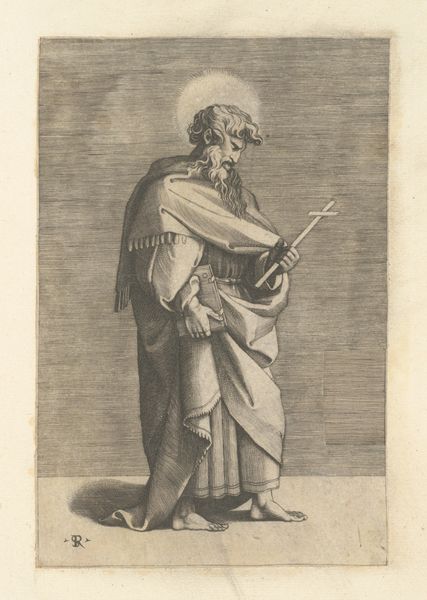
drawing, print, etching
#
portrait
#
drawing
#
baroque
# print
#
etching
#
pencil sketch
#
old engraving style
#
figuration
#
line
Dimensions: height 130 mm, width 80 mm
Copyright: Rijks Museum: Open Domain
Frederick Bloemaert created this print of an old farmer with a long coat, using etching, likely in the mid-17th century. The material is humble: an iron needle dragged across a copper plate, bitten by acid, and printed in ink on paper. Yet within this process lies a crucial story about the industrial revolution. Printmaking transformed the art world by allowing images to be reproduced on a mass scale. Etching allowed for greater freedom of line than the older technique of engraving. Bloemaert expertly uses these qualities to describe the farmer’s worn face and the heavy folds of his coat, which denote the texture of coarse cloth. His posture, leaning on a stick, speaks of a life of physical labor. This wasn't just an artistic exercise; prints like this circulated widely, shaping perceptions of rural life and the working class. By focusing on the details of its making, we see how this modest print reflects broader social and economic shifts.
Comments
No comments
Be the first to comment and join the conversation on the ultimate creative platform.
